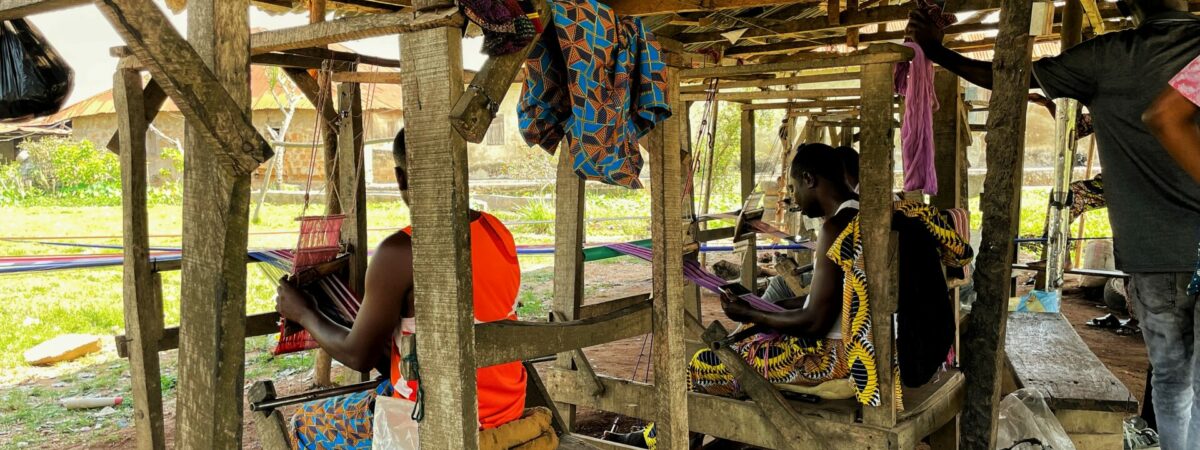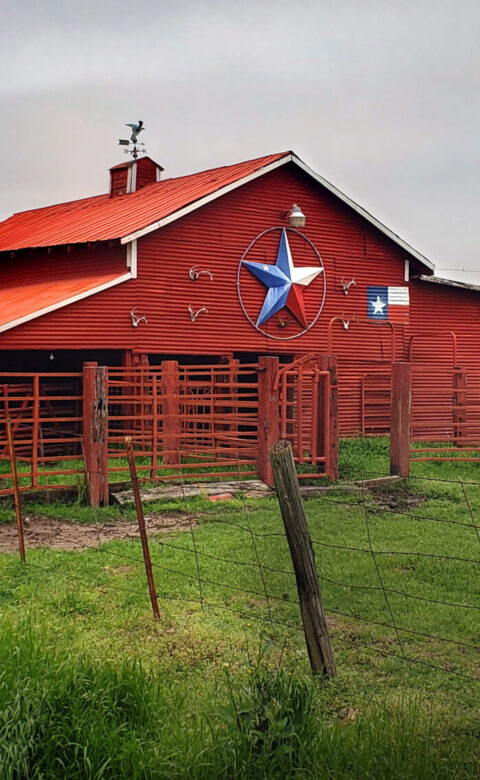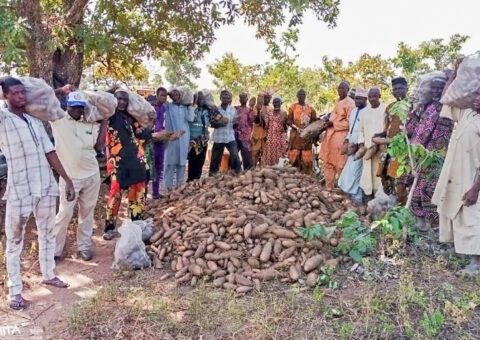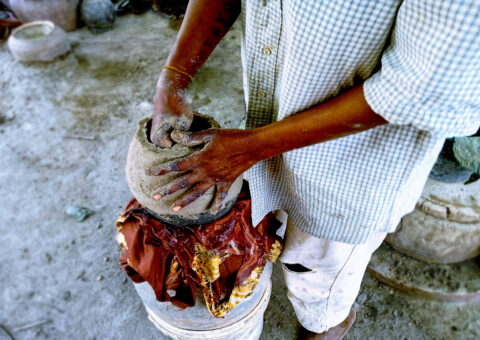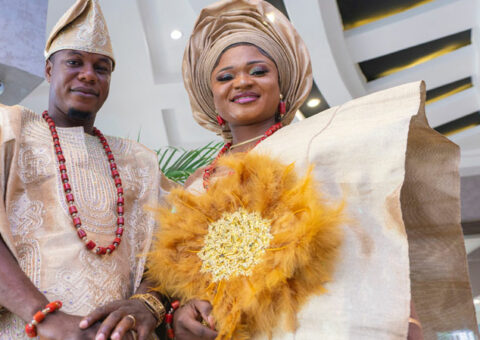Aso-Oke is a handwoven cloth made on a loom that originated around the 15th century in Yorubaland, the homeland of the Yoruba people that spans the modern-day countries of Nigeria, Togo, and Benin. In recent years, it has steadily gained popularity on the local and international stages. Local storyteller Folu Oyefeso travelled from his hometown of Ibadan to learn more about this local craft.
Research suggests the weaving of Aso-Oke started in Ile-Ife and was then taken to Iseyin; from there it began to spread all over the world. It is typically reserved for special occasions such as marriages, coronations, and child dedications (like a naming ceremony).
It was important to me to learn about this ancient craft from the source.
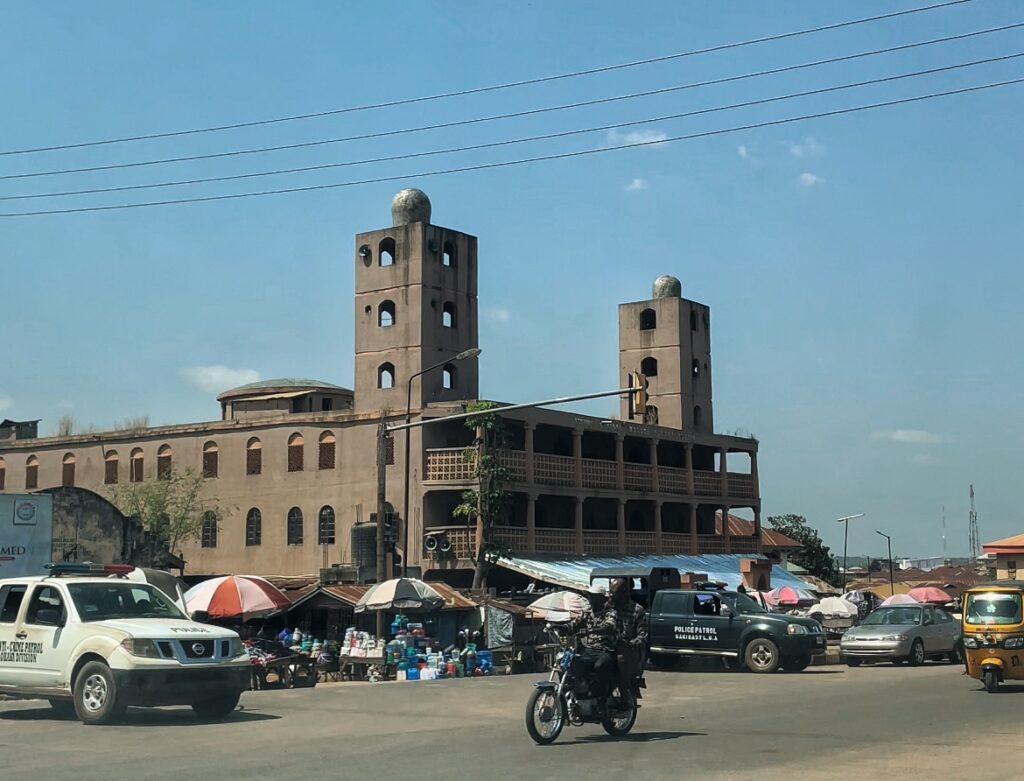
After a drive of just over two hours from Ibadan, I arrived in the ancient town of Iseyin. The mid-afternoon sun had just begun to blare down but I was grateful to have quickly found a lead for a factory visit.
Asking the locals is the best way to gather information. I was led by a man called Hakeem to an open-air shed, tucked inside the community. This shed served as the base of operations for Aso-Oke production, and I could hear the rhythmic click-clack sounds of the looms from a ways off.
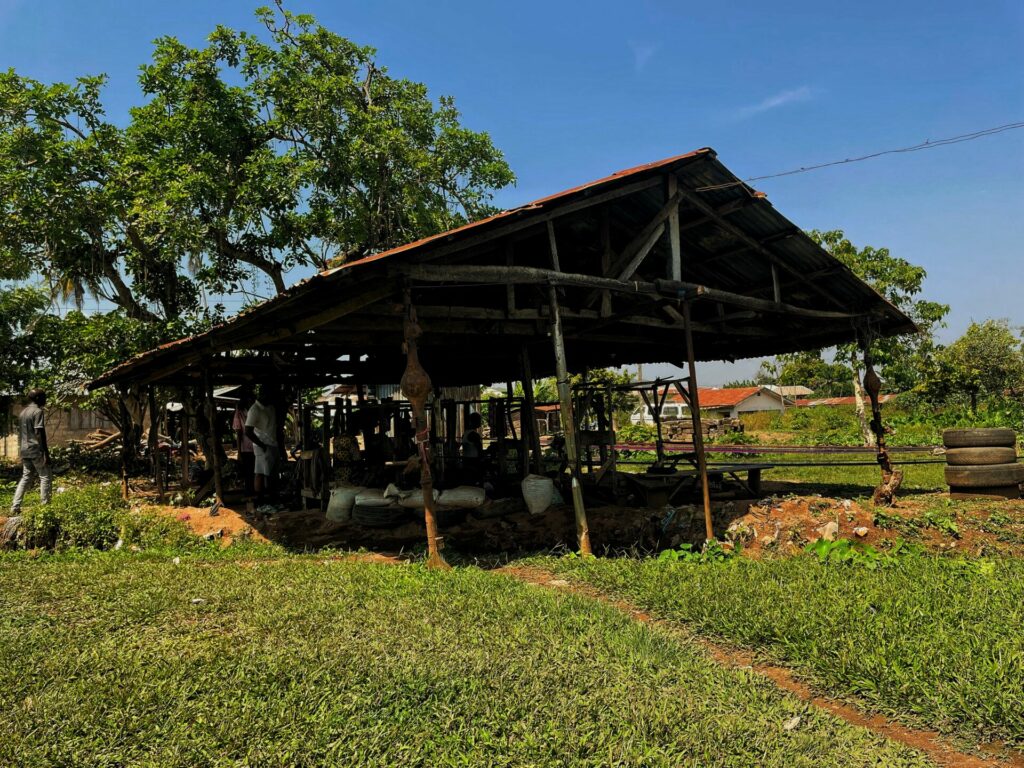
Aso-Oke is of great economic and cultural value to the Yoruba people of Nigeria. There is a popular phrase we use: “Aso la nki, ki a to ki eniyan.” This means: “We greet Aso (clothes) before we greet its wearer,” so we take our outfits quite seriously. Aso-Oke is a symbol of identity that evokes a sense of dignity and pride for the Yoruba.
Beyond its sentimental value, Aso-Oke is also responsible for putting food on the table across Yoruba communities. From the cotton planters to the weavers to the traders, the craft provides many jobs along the chain of production. It is an integral part of culture, woven into the very fabric of Yoruba society. The majority of the weavers use this craft as their primary source of income.
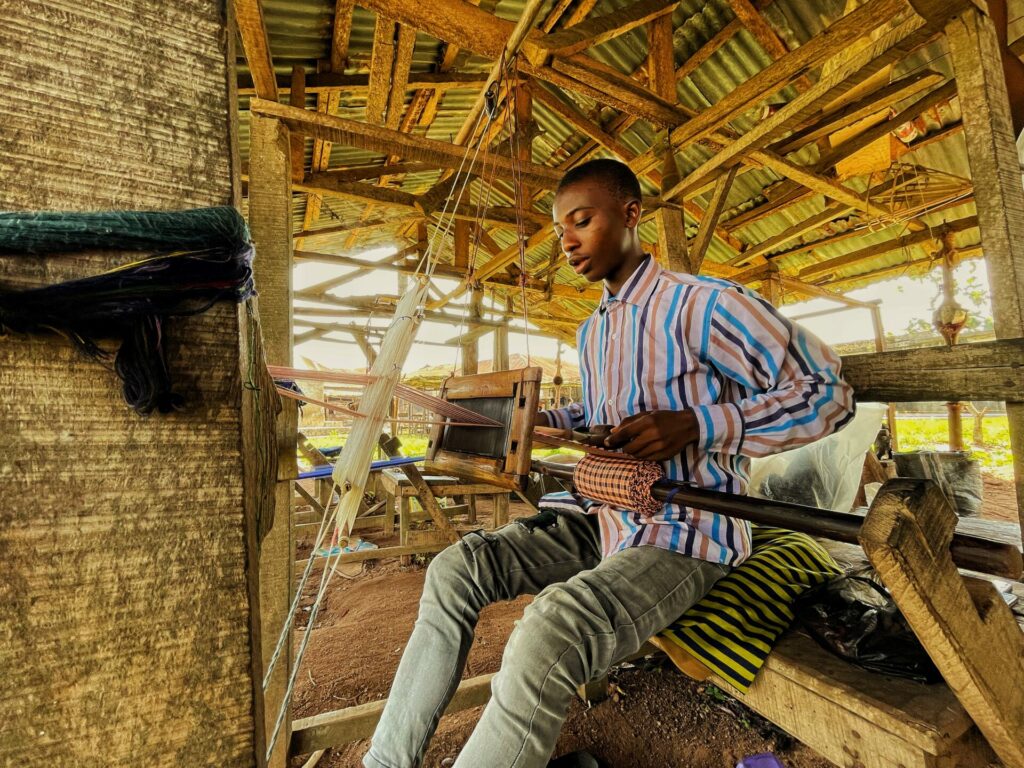
The process of making Aso-Oke begins with the cultivation of the cotton plants, which are grown and harvested by local farmers. The cotton is then hand-spun and dyed using natural dyes made from local plants and other materials. Pictured here, a young artisan spins threads of blue and yellow.
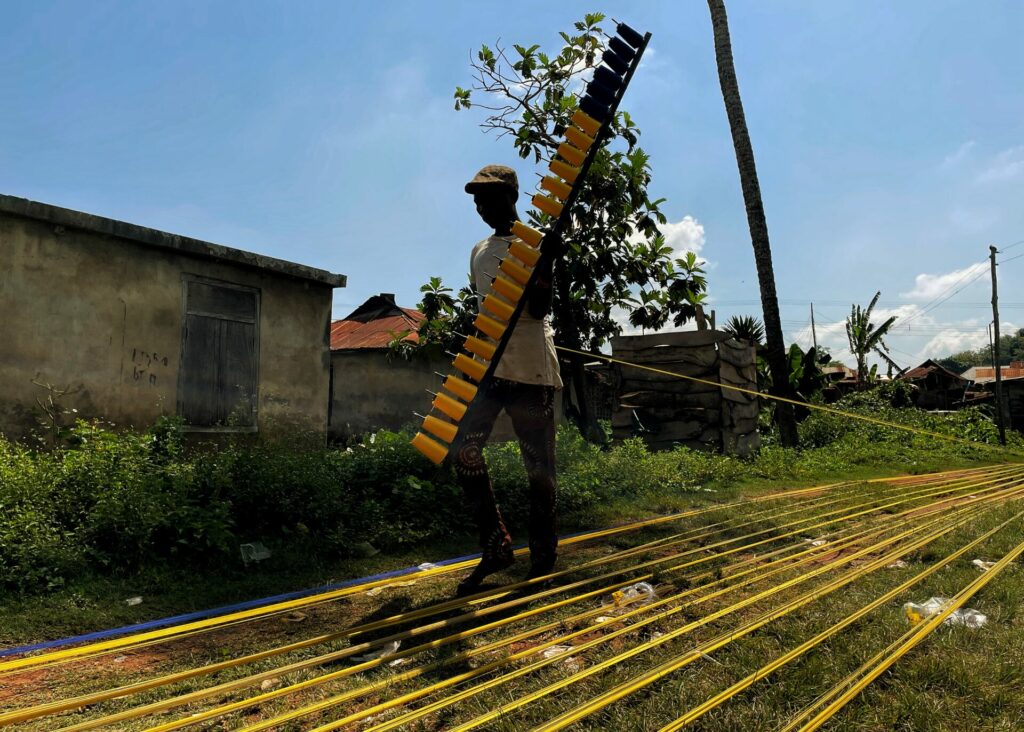
There are three types of Aso-Oke. The Sanyan variety is woven from the silk of an African silk worm and cotton yarns; it is characterised by its signature carton (cardboard) brown colour. The Alaari type, woven with either synthetically grown cotton or shiny threads, is recognised by its glossy finish. Finally, the Etu variety, which is typically indigo coloured with tiny stripes of various colours, is known for its simplicity and style.
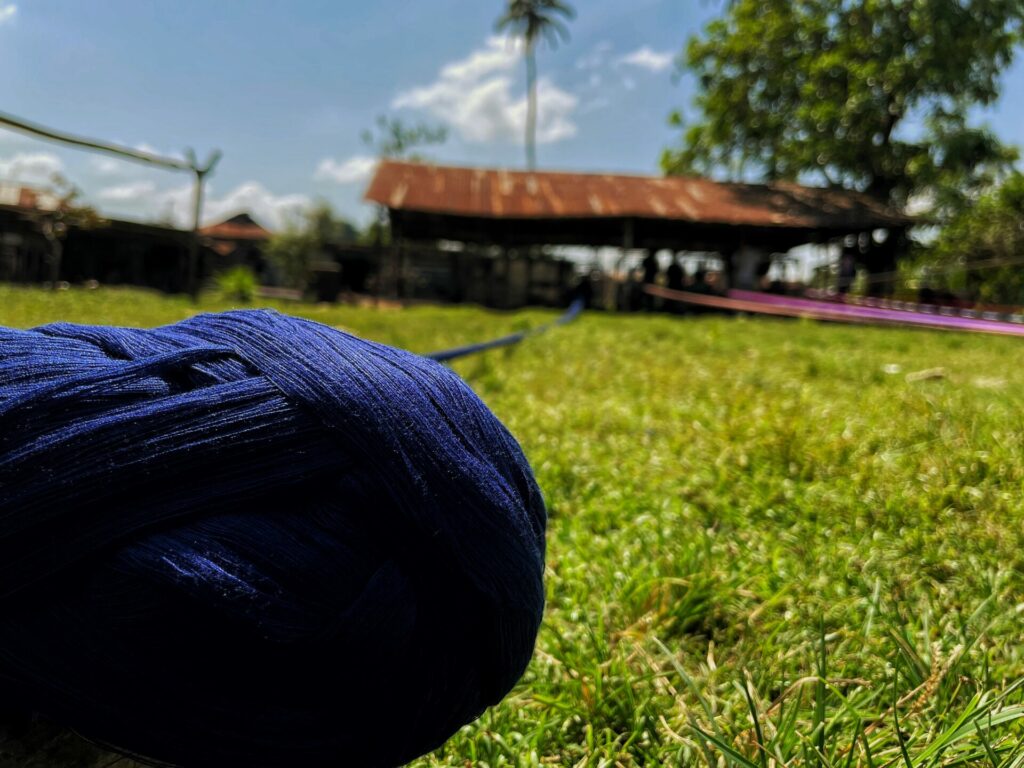
The fabric is made into rolls by skilled weavers, many of whom picked up the trade from their parents and do nothing else. These weavers spend several hours every day producing various colours of the fabric; their only aid is the wooden loom.
These looms are designed to hold threads in place while the weaver interlaces them with more thread to form fabric; it’s quite straightforward but is also a slow process. Modern-day looms produce these fabrics at a much quicker pace, and newer methods can produce new designs and motifs.
I watched these weavers skillfully pass thread back and forth. I also made an attempt to use the loom, soon realising how much skill is involved in the production.
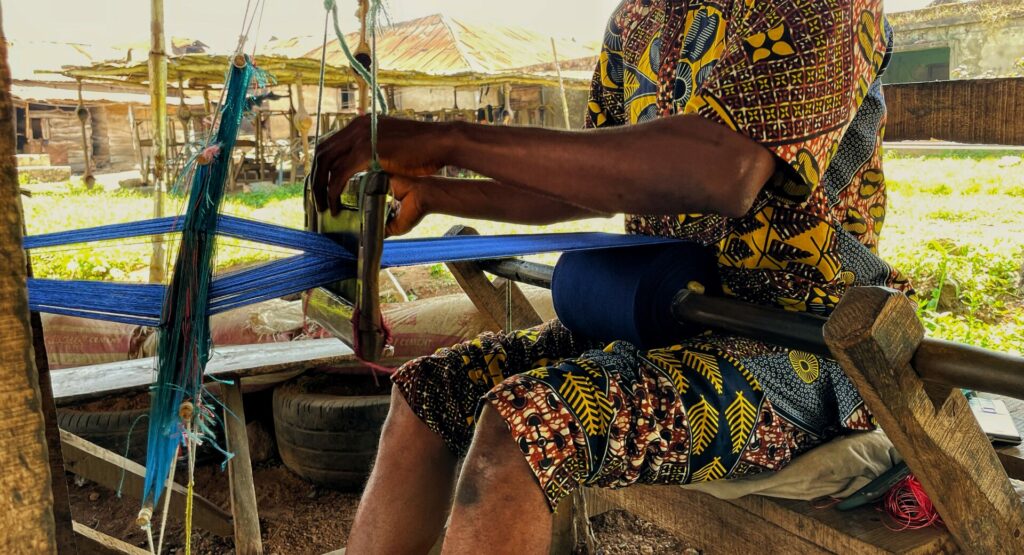
One of the things that makes the fabric quite coveted is how splendidly it sits when made into outfits. Aso-Oke drapes exquisitely on the body, making the wearer feel elegant. Embroidered patterns can be added to post-production to further improve the allure with fascinating results. It’s no wonder it has grown so popular. The dense nature of the fabric is an issue, however, and many wearers complain about the heat while wearing it, so it’s not the best for casual wear (at least in tropical climates).
Apart from traditional clothing, Aso-Oke can be applied to many different crafts. Some people have begun to investigate the use of this medium, and the results are fascinating. Examples include the WAF brand and its signature bucket hats and Femi Handbags and its mixed media bags. Artist Nengi Omuku uses the fabric as a base for her art as well.
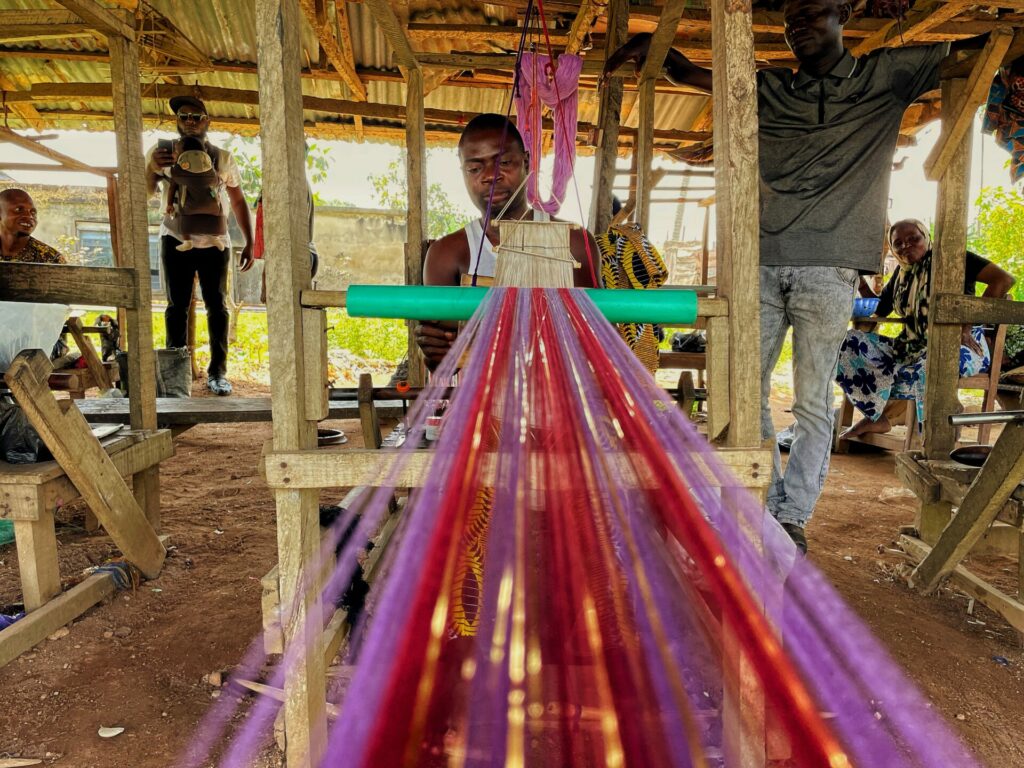
It is evident that the development of this craft is only at its early stages. As an industry, Aso-Oke begs for innovation. In terms of production quality, weaving method, technical knowledge, designs, and tools, a lot of improvements can be made. Since many of these things haven’t changed for centuries, there’s no doubt that the more we explore it, the more opportunities we will discover.
This also has personal meaning to me: It was important for me to make this trip to learn about this traditional fabric from its source. Apart from gaining knowledge from people who have been in the craft since birth, it was also important for me to learn more so that I could promote the local industry. Information about foreign individuals producing counterfeit versions of the fabric is rampant, and it’s important for people to know that if they are looking for original Aso-Oke, it should be sourced from Iseyin weavers. The counterfeit market erodes the economic value of the fabric and plays a role in disempowering the people who produce it.
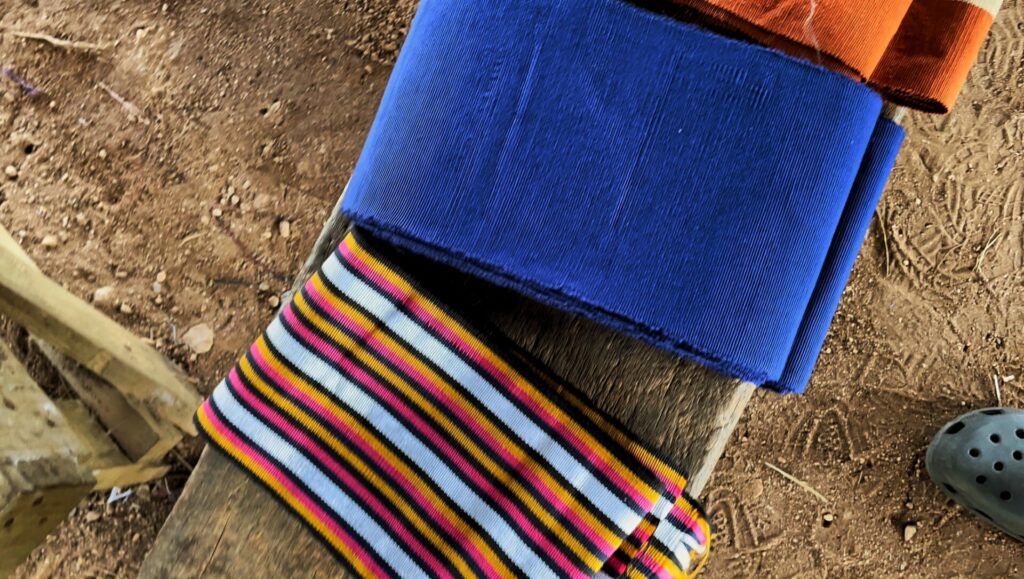
The Iseyin weavers still retain a positive outlook, however. They are confident that, with a little more interest from the public and private sectors, this fabric can get back on track as a Nigerian symbol of identity and I agree.
They sell rolls of Aso-Oke for N7,000 (around 15 euro) upwards, and supporting their craft is the first step in their empowerment.

